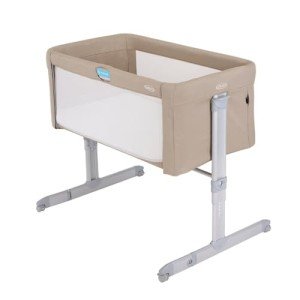The Side Sleeping Crib: A Comprehensive Guide for New Parents
Inviting a newborn into the world is a cherished experience filled with joy and obstacles. Among the lots of considerations new parents should navigate, picking the right sleeping plan for their baby is paramount. One innovative service that has acquired popularity in the last few years is the side sleeping crib. This article will explore the features, benefits, and factors to consider surrounding side sleeping cribs, offering an invaluable resource for new parents.
What is a Side Sleeping Crib?
A side sleeping crib, likewise called a co-sleeper or bedside crib, is developed to supply a safe sleeping space for infants while preserving close proximity to their parents. These cribs can be connected to the side of an adult bed or utilized as standalone systems. They provide the convenience of co-sleeping without sharing the very same sleep surface area, reducing the risk of suffocation and facilitating simpler nighttime feedings and comforting.
Benefits of a Side Sleeping Crib
- Increased Safety
Among the primary advantages of side sleeping cribs is boosted security. The American Academy of Pediatrics recommends that infants sleep in the very same room as their parents for a minimum of the first six months to lower the danger of Sudden Infant Death Syndrome (SIDS). By utilizing a side sleeping crib, parents can keep their baby within arm's reach while sticking to safety guidelines. - Convenient Nighttime Feeding
Nighttime feedings can be a strenuous routine for new parents, but a side sleeping crib makes this process significantly easier. Parents can simply reach over to comfort or breastfeed their baby without requiring to fully awake or rise. - Relieves the Transition to Independence
Side sleeping cribs can assist in slowly transitioning babies into independent sleep environments. Parents can move the crib further far from their bed over time, fostering independence while still maintaining a sense of security for the kid. - Saves Space
For households living in smaller sized homes or apartments, a side sleeping crib occupies less space than a conventional crib, making it a perfect choice for those with restricted room. - Promotes Bonding
Close proximity allows parents to quickly keep an eye on and react to their baby's needs, cultivating bonding and attachment during those important early months.
Choosing the Right Side Sleeping Crib
When choosing a side sleeping crib, several elements ought to be considered to guarantee it fits the needs of both the baby and the parents:
- Safety Standards: Ensure that the crib meets security standards set by trustworthy organizations, such as the Consumer Product Safety Commission (CPSC).
- Adjustability: Look for cribs with adjustable heights to align with the parents' bed and guarantee easy access.
- Stability: A silver lining sleeping crib needs to be stable without wobbling or moving when attached to the moms and dad's bed.
- Mobility: Consider cribs that are lightweight and have wheels for easy movement around your home.
- Material: Opt for cribs made from non-toxic products that are devoid of hazardous chemicals.
Elements to Consider
While side sleeping cribs present many benefits, parents ought to likewise keep these factors in mind to make a notified decision:
- Size of the Bed: Ensure the crib fits safely along with the adult bed, without gaps that could pose a safety risk.
- Baby's Growth: Be conscious that as infants grow, their sleeping requirements will change. Some cribs are convertible and can be used longer than conventional cribs.
- Sleeping Habits: Consider how quickly you and your partner adjust to having the baby close by throughout the night.
Frequently Asked Questions About Side Sleeping Cribs
Q1: Are side sleeping cribs safe for newborns?A1: Yes, side
sleeping cribs provide a safe sleeping environment for newborns when utilized properly, as they lower the threat of SIDS while permitting parents to stay close.
Q2: How do I assemble a side sleeping crib?A2: Assembly guidelines generally accompany the crib. Ensure it is firmly connected to the adult bed, following the standards provided by the manufacturer. Q3: Can I use a side sleeping crib
for longer than six months?A3: Yes, numerous side sleeping cribs can accommodate infants beyond
six months, depending on their growth and development. Check Bedside Cot For Infants for weight and height limitations. Q4: What if my baby rolls over?A4: Most side sleeping cribs are designed with safety features
to avoid babies from presenting.
Nevertheless, constantly monitor your baby and seek advice from pediatric standards about the correct time to shift them to a crib. The side sleeping crib is a versatile and useful sleeping service for new parents.
It provides security, benefit, and assistance throughout the early stages of being a parent while promoting nearness between moms and dad and child. By considering safety standards, adjustability, and specific family needs, parents can make an educated decision about this vital piece of baby gear. Table: Pros and Cons of Side Sleeping Cribs Pros Cons Improved security throughout sleep Minimal use duration as baby grows
Relieve of nighttime feeding May require extra space Promotes bondingAdjustmentperiod forparents and baby Conserves physical space Prospective for unpredictable sleeping patterns Aswith any parenting choice, whatworks finest will constantly depend on specific household characteristics. Highlighting safety,convenience, and connection will help parents choosethe right sleeping arrangements for their little ones to guarantee a good start to
life.

